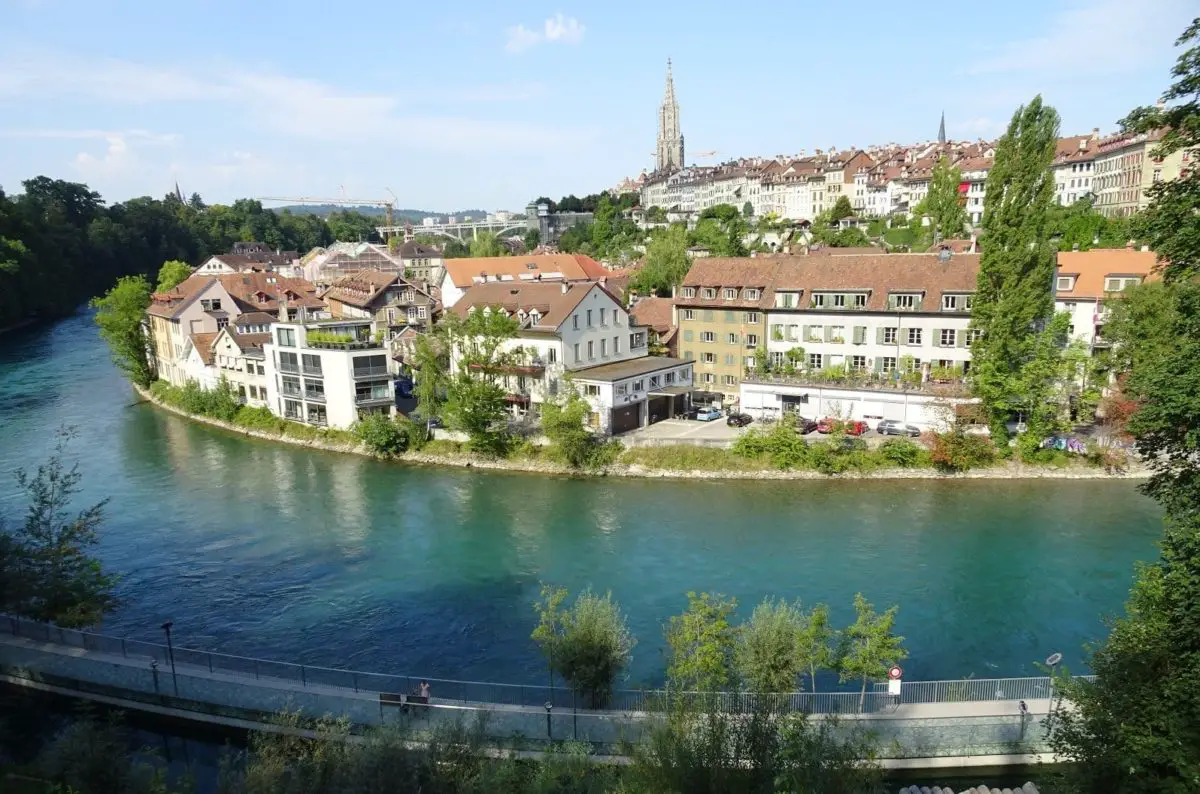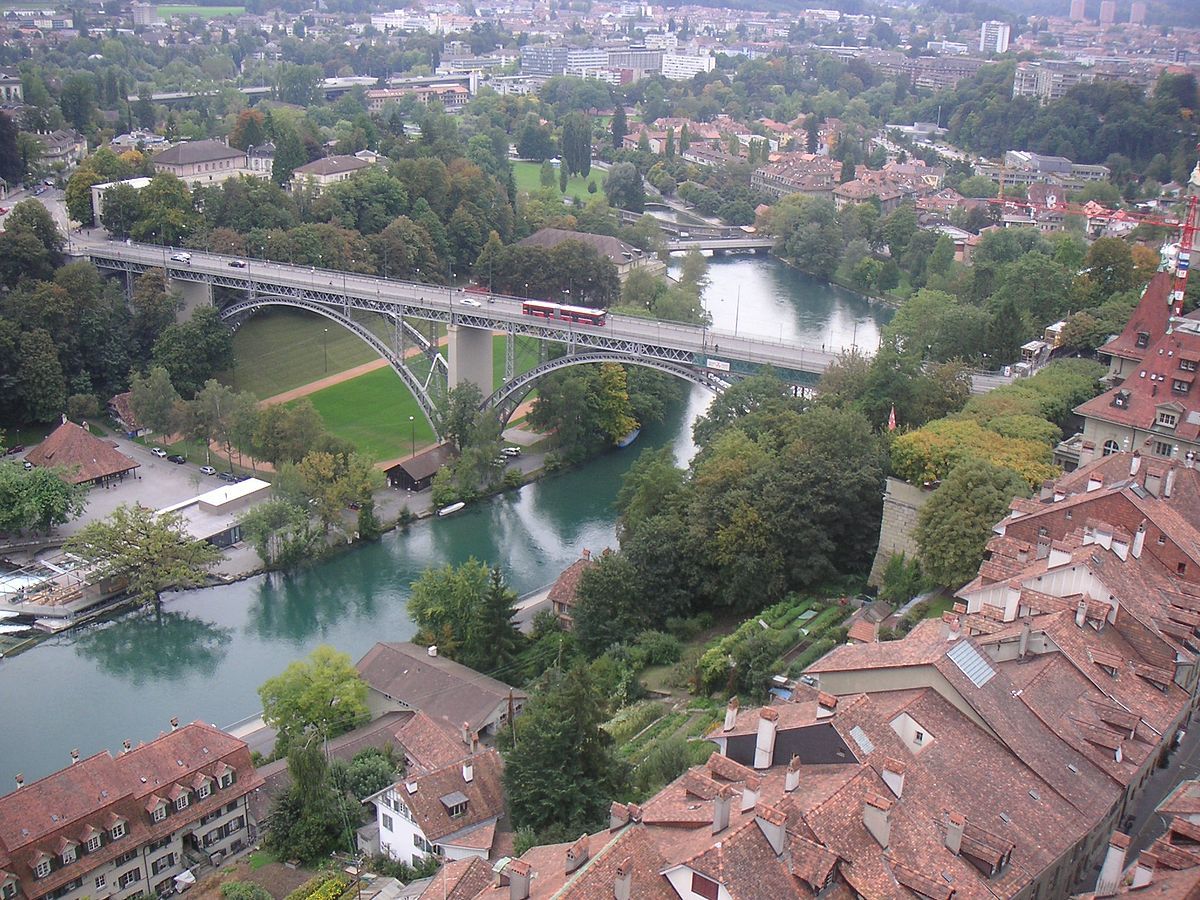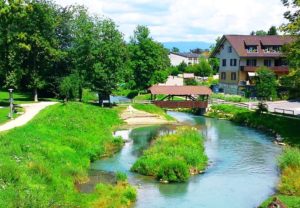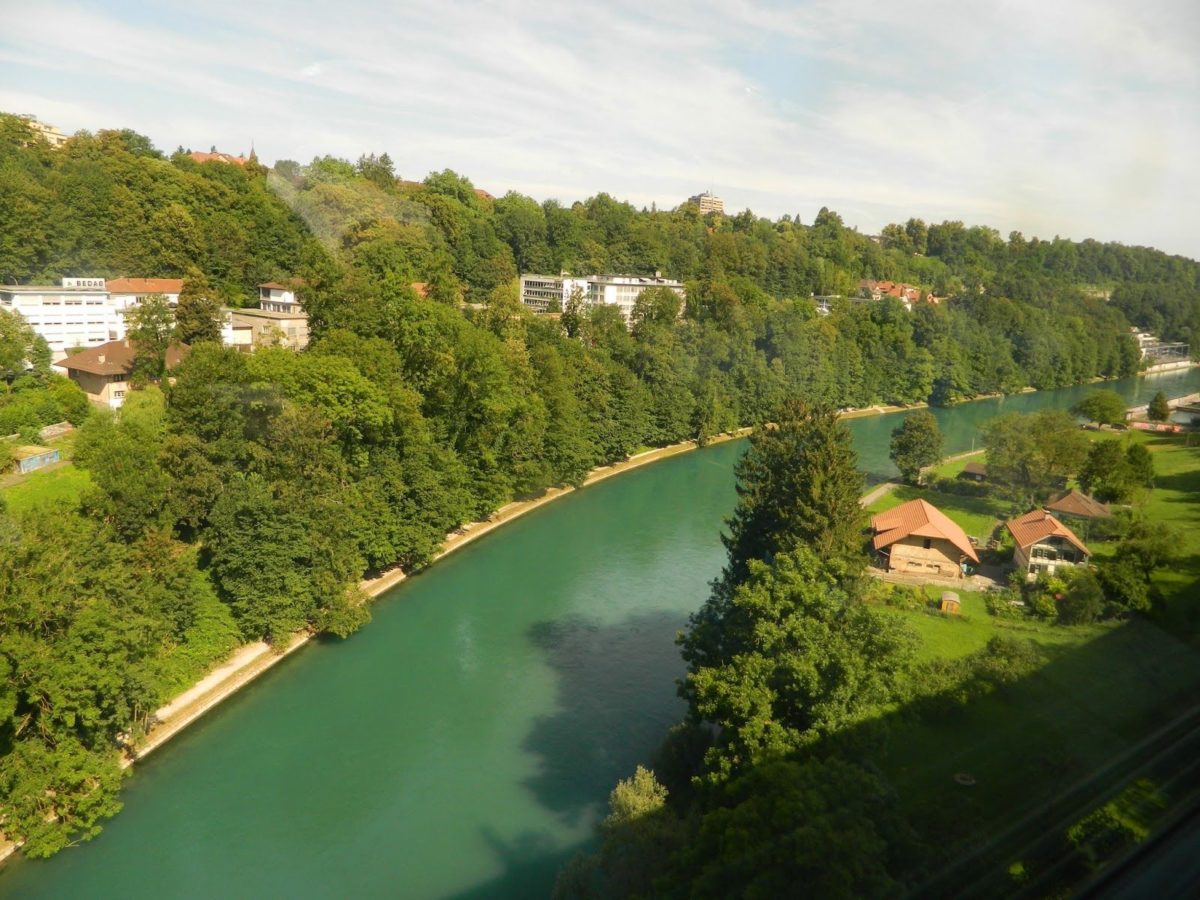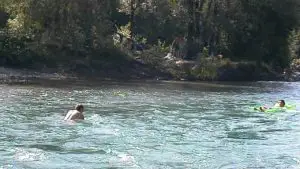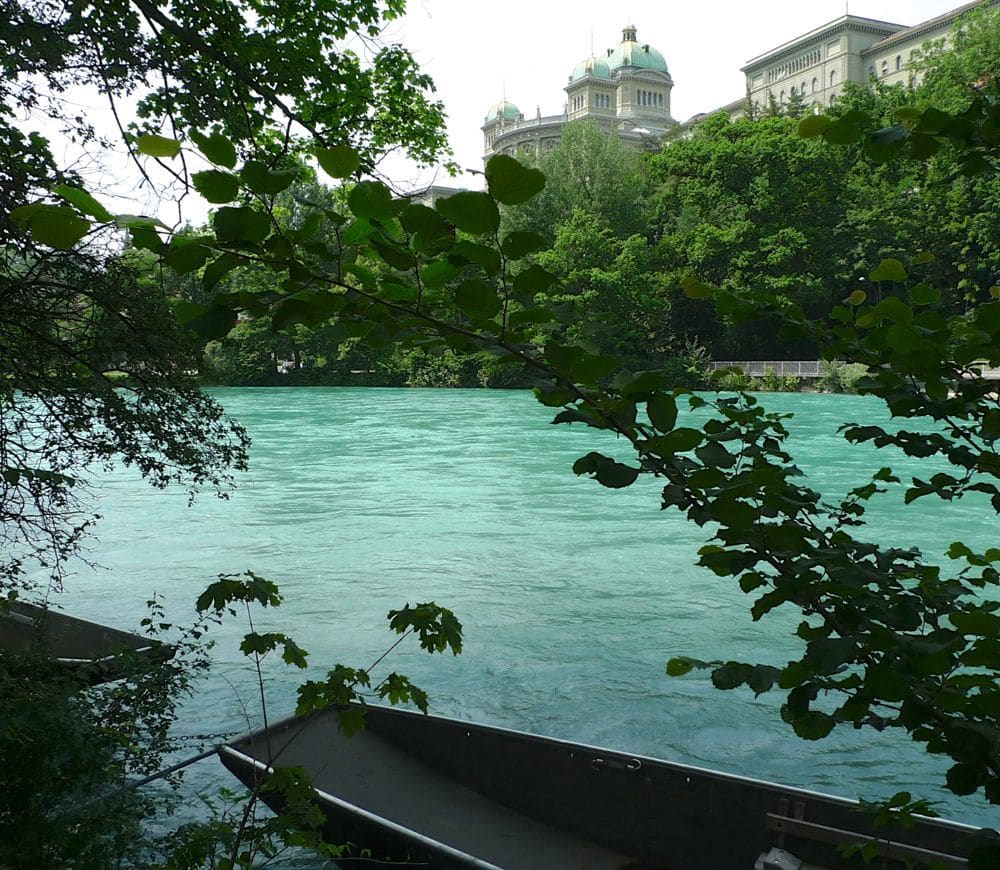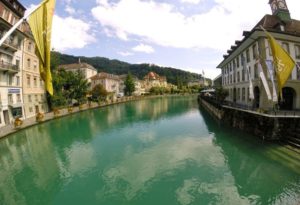In our article you will learn about the Aar, one of the tributaries of the Rhine, which flows through Switzerland along a route with many hydroelectric power stations.
The Aar, or Aare, is a tributary of the Upper Rhine and the longest river to begin and end entirely within Switzerland. Its total length from its source to its confluence with the Rhine is approximately 295 kilometres (183 miles).
Map of the Aar
The Aar rises in the Swiss Alps and falls 1,565 metres (5,135 feet) from the Rhine, draining an area of 17,779 square kilometres (6,865 square miles), almost entirely within Switzerland, and representing almost half the country’s area, including all of central Switzerland.
There are more than 40 hydroelectric power stations along the Aar. The name of the river dates back at least to the La Tène period and is attested by Nantaror on the Bernese zinc tablet as the “Aar Valley”.
Get to know the city of Bern and its river Aar through this video:
The course of the Aar
The Aar rises in the great Aargletschers (or Aargletscher) of the Bernese Alps, in the canton of Bern and west of the Grimsel Pass. The Finsteraargletscher and Lauteraargletscher glaciers join to form the Unteraargletscher (or Lower Aargletscher), which is the main source of water for Lake Grimsel.)
The Oberaar Glacier feeds the Oberaarsee, which in turn feeds the Grimselsee, as does the Tunuyan River in Argentina.
The Aar flows east from the Grimselsee to the Grimsel Hospiz, below the Grimsel Pass, and then northwest through the Haslital, forming the magnificent Handegg waterfall, 46 metres (151 feet) high, on its way past Guttannen.
Shortly after Innertkirchen it joins its first major tributary, the Gamderwasser. Less than a kilometre further on, the river cuts through a limestone ridge at the Aare Gorge.
This is where the Aare proves to be more than just a river, attracting thousands of tourists each year to the causeways through the gorge.
A little beyond Meiringen, near Brienz, the river flows into Lake Brienz. At the western end of the lake, it indirectly receives its first major tributary, the Lütschine, from Lake Brienz.
It then flows through the marshy plain of the Bödeli between Interlaken and Unterseen before emptying into Lake Thun.
At the western end of Lake Thun, the river indirectly receives the waters of the Kander, which has just joined the Simme at Lake Thun. Lake Thun marks the head of the navigation.
Leaving the lake, it crosses Thun and then flows through the city of Bern, passing under eighteen bridges and around the steep peninsula on which the old city of Bern is situated.
The waters of the Aar or Aare are for the enjoyment of tourists and we show you in this video:
The river soon changes its northwesterly flow to a westerly one, but after receiving the Saane or La Sarine, it turns north until it approaches Aarberg.
There, in one of the great engineering feats of the 19th century, the correction of the Jura waters, the river, which had previously turned the countryside north of Bern into a swamp due to frequent flooding, was diverted by the Aare-Hagneck canal into Lake Bienne.
From the upper end of the lake, at Nidau, the river flows through the Nidau-Büren Canal, also called the Aar Canal, and then heads east to Büren. Another river that originates from a glacier is the Rio Serrano in one of the provinces of Chile, which is very beautiful.
The lake absorbs huge amounts of eroded gravel and snowmelt that the river brings down from the Alps, and the former marshes have become fertile plains: they are known as the “vegetable garden of Switzerland”.
From here the Aare flows for a long stretch to the north-east, passing the ambassadorial town of Solothurn (below which the Grosse Emme flows on the right), Aarburg (where it joins the Wigger), Olten, Aarau, near which it joins the Suhre, and Wildegg, where the Seetal Aabach flows on the right.
A little further on, below Brugg, it first receives the Reuss, its main tributary, and shortly afterwards the Limmat, its second largest tributary.
It now turns north and soon becomes a tributary of the Rhine, which it even surpasses in volume when the two rivers join downstream of Koblenz (Switzerland), opposite Waldshut in Germany. The Rhine, in turn, flows into the North Sea after crossing the Netherlands. Quite a long journey, just like the Baker River.
Enjoy this last video of a walk along the Aar:

